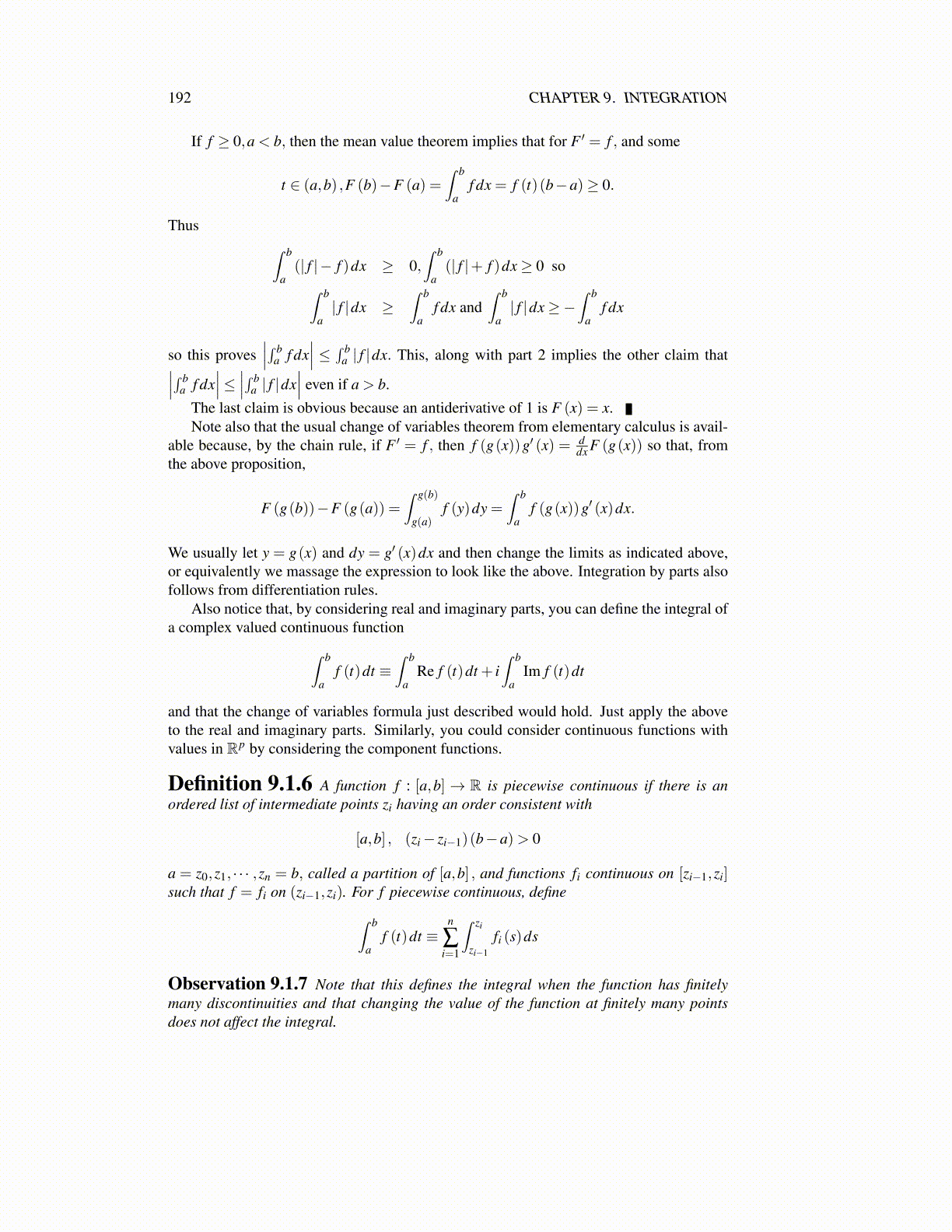
192 CHAPTER 9. INTEGRATION
9.2 The Riemann Stieltjes IntegralIn this section are the principal theorems about Stieltjes integrals, including the classicalRiemann integral, as a special case. A good source for more of these things is the book byApostol [2] and Hobson [18]. The difference here is that instead of dx you use dg where gis a function, usually of bounded variation. This is more general than the previous section.You simply take g(x) = x in what follows and obtain the earlier material. I wanted to givea review of familiar material first before launching in to Stieltjes integrals.
In all which follows I will always tacitly assume that f is a bounded function definedon some finite interval.
9.3 Fundamental Definitions and PropertiesFirst we need to define what is meant by finite total variation.
Definition 9.3.1 Let g be a function defined on [a,b]. For
P[a,x] ≡ {x0, · · · ,xn}
a partition of [a,x] ,define V(P[a,x],g
)by
n
∑i=1|g(xi)−g(xi−1)| .
Define the total variation of g on [a,x] by
V[a,x] (g)≡ sup{
V(P[a,x],g
): P[a,x] is a partition of [a,x]
}.
Then g is said to be of bounded variation on [a,b] if V[a,b] (g) is finite. Also, for P ={x0,x1, · · · ,xn} where xk ≥ xk−1, ∥P∥ ≡max{|xk− xk−1| : k = 1,2, · · · ,n} .
Then with this definition, one has an important proposition which pertains to the caseof principal interest here in which the functions are all real valued. The above definitionof finite total variation works for functions which have values in some normed linear spacehowever.
Proposition 9.3.2 Every real valued function g of bounded variation can be writtenas the difference of two increasing function, one of which is the function x→ V[a,x] (g) .Furthermore, the functions of bounded variation are exactly those functions which are thedifference of two increasing functions.
Proof: Let g be of bounded variation. It is obvious from the definition that x→V[a,x] (g)is an increasing function. Also g(x) = V[a,x] (g)−
(V[a,x] (g)−g(x)
)The first part of the
proposition is proved if I can show x→ V[a,x] (g)− g(x) is increasing. Let x ≤ y. Is it truethat V[a,x] (g)−g(x)≤V[a,y] (g)−g(y)? This is true if and only if
g(y)−g(x)≤V[a,y] (g)−V[a,x] (g) (9.1)
To show this is so, first note that V(P[a,x],g
)≤V
(Q[a,x],g
)whenever the partition Q[a,x] ⊇
P[a,x]. You demonstrate this by adding in one point at a time and using the triangle inequal-ity. Now let Py and P[a,x] be partitions of [a,y] and [a,x] respectively such that
V(P[a,x],g
)+ ε >V[a,x] (g) , V (Py,g)+ ε >V[a,y] (g)